High sensitivity MRM workflow for signature peptide quantification
Featuring the SCIEX Triple Quad™ 7500 LC-MS/MS System – QTRAP® Ready, powered by SCIEX OS Software
Ian Moore1 , Lei Xiong2
1SCIEX, Canada; 2SCIEX, USA
Abstract
Here, a SCIEX Triple Quad™ 7500 LC-MS/MS System was used to quantify surrogate peptides for a therapeutic antibody in rat plasma. Multiple MS improvements significantly enhanced the system sensitivity. Ultra-low LLOQs, ranging from 5 to 39 fmol/mL were achieved with high reproducibility, precision, accuracy, and linearity.
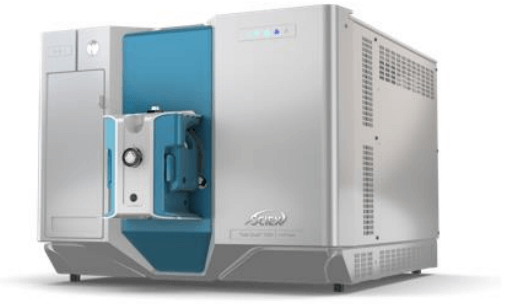
Introduction
Quantification of peptide/protein therapeutics in biological matrices is crucial for therapeutic development. Serving as an orthogonal technology to the traditional ligand binding assays (LBAs), LC-MS has been routinely adopted for quantitative measurement of protein levels in bioanalytical laboratories. The capability of a triple quadrupole system to quantify low concentration analytes from small sample volumes, in line with current LBAs, has been a main stay of analytical analysis in this area. However, further sensitivity, improved %CV and linear dynamic range (LDR) operating down to lower concentrations would greatly benefit this analytical methodology.
While different MS approaches have been investigated by researchers, quantification using peptides as surrogates (bottomup proteomic workflows) using targeted LC-MRM strategies remains the most common. It offers not only high sensitivity, but also a wide linear dynamic range (LDR) combined with high reproducibility to provide reliable quantitative measurements.
Here, a SCIEX 7500 System was used to quantify a series of surrogate peptides in rat plasma. Multiple hardware improvements on the ion source and the front end of the mass analyzer significantly boost the systems sensitivity and low-level %CV values. Ultra-low LLOQs, ranging from 5 to 39 fmol/mL are achieved. The assay shows high reproducibility, precision, accuracy, and linearity, proving the robustness and performance of the developed method.
Figure 1. Sensitivity gains for peptide quantification. MRM XIC comparison between SCIEX 7500 System (left) and QTRAP 6500+ LCMS/MS System (right) for mAb signature peptides at 5 or 39 fmol/mL in rat plasma.
Key features of peptide quantification workflows
- Hardware improvements on the SCIEX 7500 System provide significant gains in sensitivity for peptide quantification: the OptiFlow® Pro Ion Source with E Lens™ Technology provides improvements in ion generation and the D Jet™ Ion Guide improves ion sampling1
- An average of 3-fold improvement in S/N was observed when analyzing surrogate peptides in biological matrices with high reproducibility, accuracy, and linearity
- SCIEX OS Software—an easy to use, compliance ready and single platform for acquisition, processing and data management
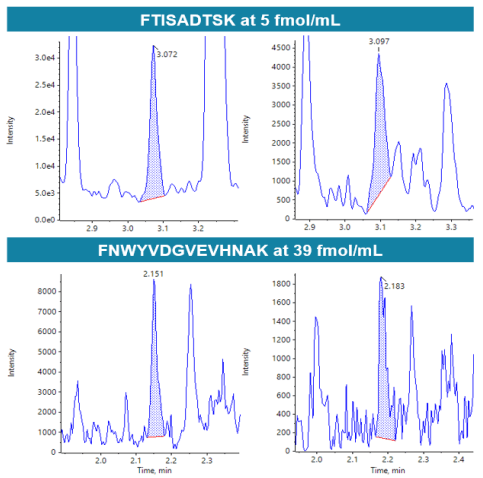 Click to enlarge
Click to enlarge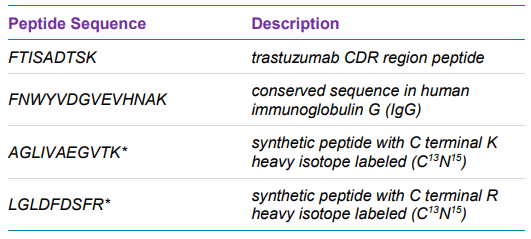 Click to enlarge
Click to enlarge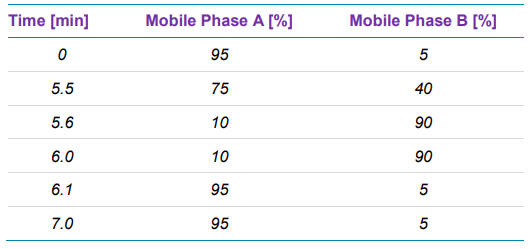 Click to enlarge
Click to enlarge Click to enlarge
Click to enlarge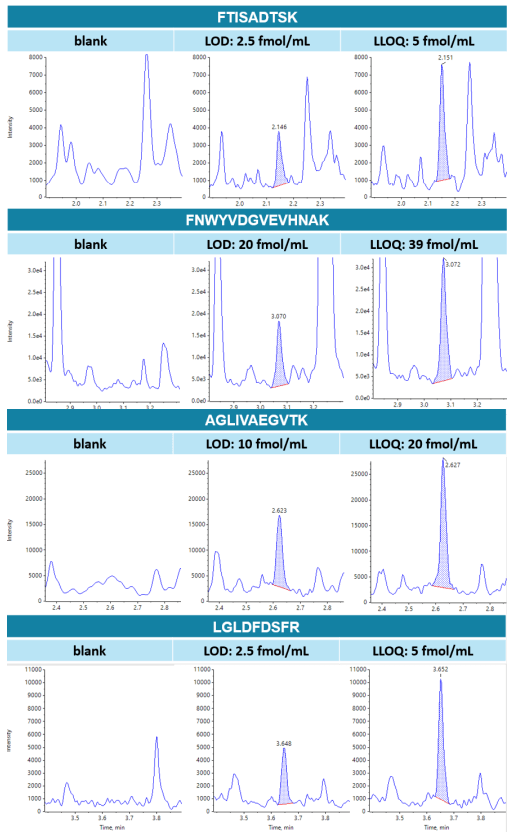 Click to enlarge
Click to enlarge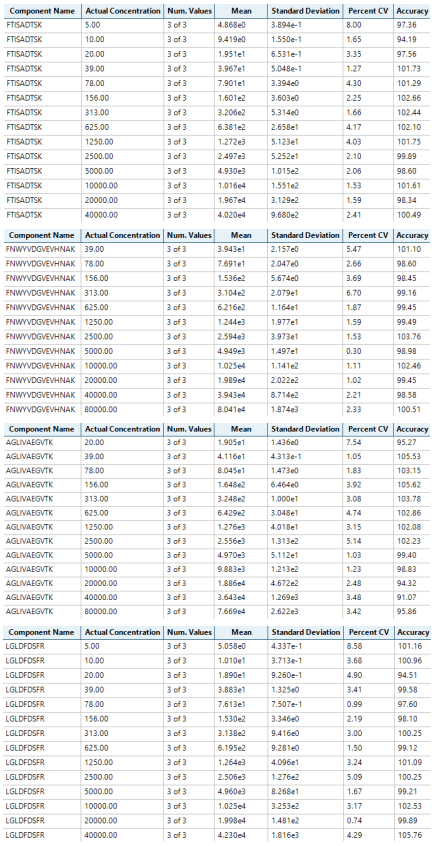 Click to enlarge
Click to enlarge Click to enlarge
Click to enlarge